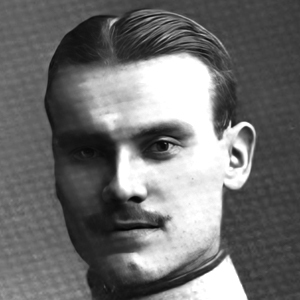Håkan Björnström-Steffansson's New York Tribune Account
H. Bjornston Steffanson [sic], of Stockholm, a lieutenant in the Artillery Guards, came to the Hotel Gotham from the Carpathia. Stephanson [sic] was a first cabin passenger on the Titanic.
"I was in the smoking room of the Titanic at 11:45 Sunday night with Hugh Woolner," said lieutenant Steffanson, "and we were just sitting up for a late smoke, in evening dress, when the crash came. It shook the whole boat, and we rushed out on the deck. A man who was at the rail said, 'I just saw an iceberg fifty feet higher than the top deck go by.' – for myself, I saw no iceberg. The lights did not go out, and as far as I saw there was no confusion – at first. I think most of the passengers were in bed, and I'm sure most of the women were. An order came from the captain, delivered by hurrying stewards, for every one to put on lifebelts. As far as I saw there was practically no panic at that time. After the first scare of the crash, people reassured each other, and said the boat was unsinkable. It was terribly cold, but perfectly calm. There was a brilliantly clear sky.
"Woolner and I went down to a lower deck, then we thought we'd walk toward the bow. We had absolutely no thought of sinking, though we saw that the lifeboats were being loaded with women. But there were men standing round the lifeboats, apparently reassuring the women talking with them. We went up forward near the bridge, and then down to a still lower deck, still looking for the part of the boat that had been damaged, when suddenly there was a rush of water from up forward, and in a second we found ourselves knee deep in water.
"I said to Woolner, 'We'd better jump,' and we both jumped. I should say we jumped at least ten feet clear of the boat. When I came up I found myself beside a canvas collapsible boat, and Woolner was right nearby. We both grabbed hold of the boat, and just towed along for a few minutes. It was bitter cold, and it seemed as if that was the last boat to come away from the Titanic.
"The Titanic men who manned the boat said they could take in another couple, so Woolner and I clambered in. A second later a fat man bobbed up in the water in front of the boat, and he was also dragged in. We saw only fourteen lifeboats, and two canvas collapsible boats. The three men brought the gunwales of our boat close to the water, but in the perfect calm that prevailed she floated all right.
"We got about two hundred feet away from the Titanic, when we saw all the lights go out in a flash. Thirty seconds later there was a roar, and we saw the big boat settle a second, and then plunge straight down head foremost. It was quiet for a moment, and then we saw the people who had been on the decks bob up, and there was the most terrible cry that I have ever heard in my life. It was about twenty minutes after 2 o'clock then. We didn't feel any suction whatever.
"For about two hours we just rowed around. We rolled badly at times, but it didn't seem dangerous. Some of the people didn't have any clothes. There were women from the first and second cabins and from the steerage in our boat. About 4 o'clock in the morning we saw lights of a big boat coming. It was the Carpathia. The wind was rising then and it was very cold. For a time it looked as if they wouldn't see us, but they finally did and we were taken aboard.
"So far as I saw, they put the women into the lifeboats first, but at that time, which was before Woolner and I started walking around the Titanic, no one seemed to think that the big vessel would sink. We thought they were putting the women in the lifeboats more to reassure them than anything else.
"Just as the vessel settled before the final plunge I saw one of the officers shoot his revolver into the air twice. There were a lot of men jumped into the sea just at the last. They seemed to bob up just once after the Titanic sank and then they went down, and we never saw them again. I suppose the suction drew them down."
Steffanson said that he believed a great many of the Titanic survivors died while aboard the Carpathia, but didn't have any idea how many or who they were. The treatment accorded the survivors aboard the Carpathia, he said, was fine. He came aboard in nothing but a water soaked dress suit, and sailors on the Cunarder loaned him an old coat and a muffler for his neck.
Source Reference
Title
Håkan Björnström-Steffansson's New York Tribune Account
Survivor
Håkan Björnström-SteffanssonDate
April 19, 1912
Newspaper
New York Tribune
Copyright Status
Public DomainThis is item can be used freely as part of Titanic Archive’s Open Access policy.
